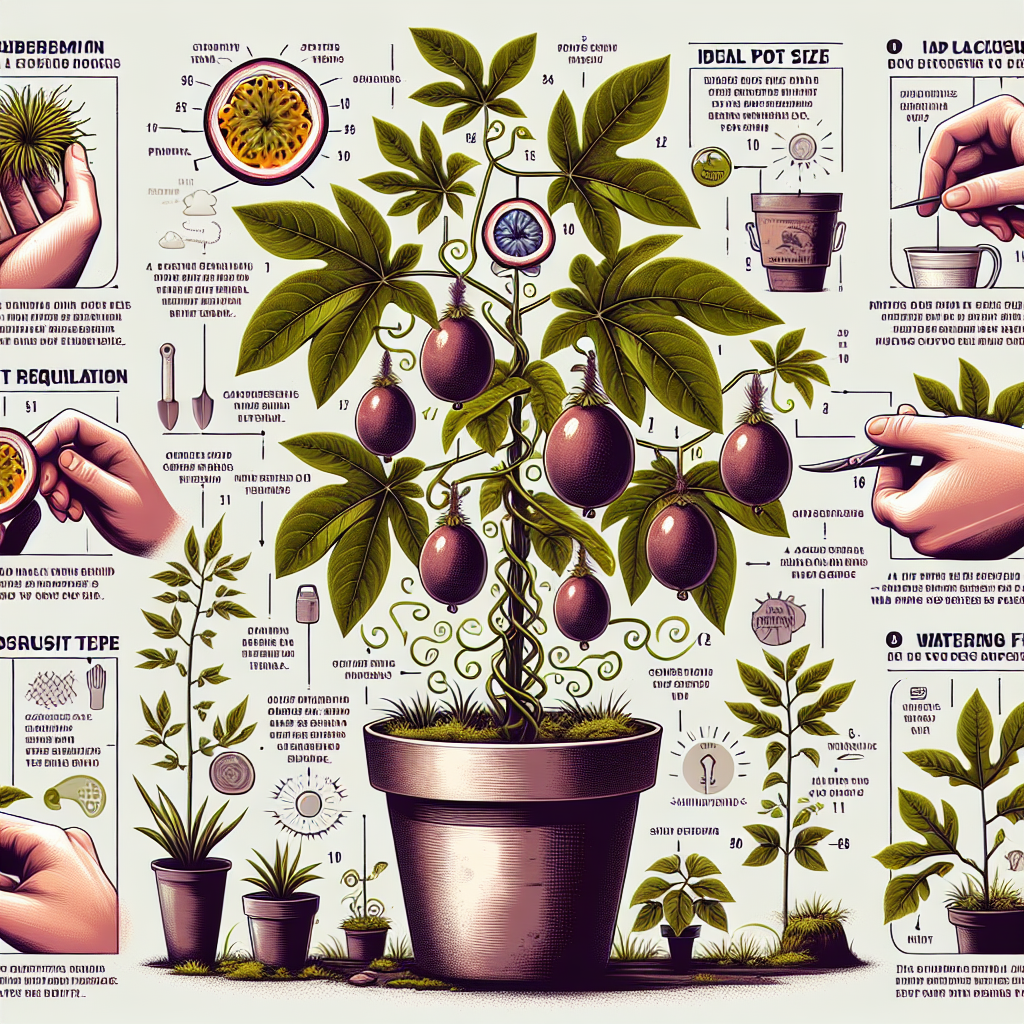Unleashing the Secrets to Successfully Cultivate Passion Fruit at Home
Passion fruit, with its vibrant colors and distinct sweet-tart flavor, is a tropical fruit that has gained popularity worldwide. It is not only delicious but also packed with nutrients like vitamins A and C, fiber, and antioxidants. While passion fruit can be found in most grocery stores, cultivating it at home can be a rewarding experience. In this article, we will uncover the secrets to successfully cultivate passion fruit at home.
1. Choosing the Right Variety
Before starting your passion fruit cultivation journey, it’s crucial to select the right variety for your climate and growing conditions. There are two main types of passion fruit: Purple Passionfruit (Passiflora edulis) and Yellow Passionfruit (Passiflora edulis f. flavicarpa). Purple Passionfruit is more commonly cultivated for its superior taste and aroma.
Consider consulting local nurseries or agricultural extension offices to determine which variety thrives best in your region. Climatic factors such as temperature, humidity, and rainfall play significant roles in successful cultivation.
2. Selecting a Suitable Location
Once you’ve chosen the variety, find an ideal location in your garden that receives plenty of sunlight (at least six hours per day) and has well-drained soil. Passion fruit plants require warmth for optimal growth and should be protected from strong winds as they can cause damage to delicate vines.
3. Preparing the Soil
Prepare the soil before planting by removing weeds, rocks, or any other debris that may obstruct root development. Passion fruit plants prefer slightly acidic soil with a pH level of 6-6.5.
Enhance the soil’s fertility by adding organic matter like compost or well-rotted manure. This will nourish the plants with essential nutrients while improving drainage and water-holding capacity.
4. Planting Your Passion Fruit Vine
It’s advisable to start growing passion fruit from already established plants rather than seeds. Visit local nurseries or garden centers to purchase a healthy, disease-free vine.
Dig a hole slightly larger than the plant’s root ball and gently place the vine in it. Backfill the hole with soil, ensuring that the plant is at the same level as it was in its container. Water thoroughly after planting to settle the soil around the roots.

5. Providing Adequate Support
Passion fruit plants are vigorous climbers that require strong support structures to grow vertically. Install trellises, fences, or sturdy poles with wires for the vines to cling onto. As they grow, guide and train the tendrils along the support structure to prevent damage and promote upward growth.
6. Watering and Fertilizing
Proper watering is essential for passion fruit cultivation. The plants need consistently moist soil but should not be waterlogged. A regular watering schedule is recommended, especially during dry periods or when fruits are developing.
Apply a balanced fertilizer every few months during the growing season (spring and summer) to supply essential nutrients for healthy growth and abundant fruit production. Avoid excessive use of nitrogen-based fertilizers as they may promote vegetative growth at the expense of fruiting.
7. Pruning and Maintenance
Regular pruning is crucial for maintaining passion fruit plants’ health, shape, and productivity. Prune away dead or damaged growth, thin out crowded areas to improve air circulation, and remove any suckers growing from the base of the plant.
Pruning also helps control diseases and pests by reducing hiding spots and improving sunlight penetration throughout the plant canopy.
8. Harvesting Ripe Passion Fruit
Patience is key when waiting for your passion fruit to ripen! The fruits typically take about six months from flowering to maturity.
Ripe passion fruits usually fall off on their own when gently touched or twisted. Another indication of ripeness is a change in skin color – purple varieties turn deep purple, and yellow varieties develop a golden hue. Harvest the fruits promptly to avoid overripening or decay.
Conclusion
Cultivating passion fruit at home can be an exciting and rewarding experience. By selecting the right variety, providing suitable growing conditions, and following proper care and maintenance techniques, you can successfully grow delicious passion fruits in your own garden. So, unleash your inner gardener and get ready to enjoy the flavors of this tropical delight!














